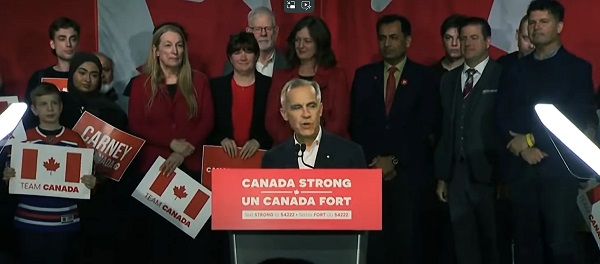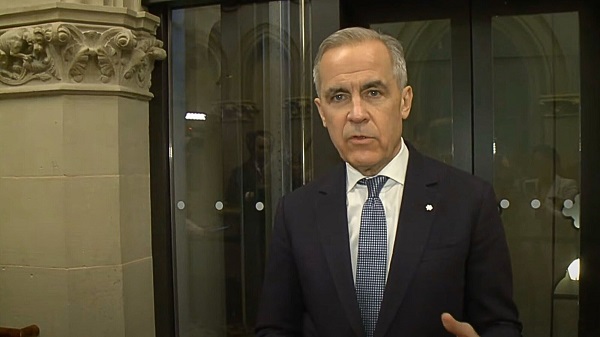illegal immigration
How to Lower the Risk of New Terror Strikes by Border-Crossing Islamist Extremists
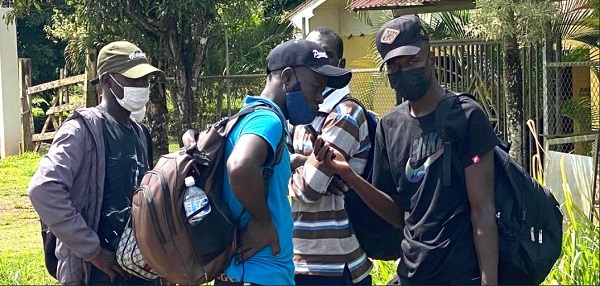
U.S.-bound Mauritanian migrants in Costa Rica near the Nicaraguan border. 2022 Photo by Todd Bensman.
From the Center for Immigration Studies
By Todd Bensman
So a border-crossing illegal immigrant has finally conducted a terror attack just as the FBI Director and the U.S. intelligence community has warned with increasing frequency would happen because of a 2021-2024 mass migration border crisis the New York Times recently concluded was the “largest in U.S. history”, fomented by policies of the Joe Biden administration.
Mauritanian national Sidi Mohammad Abdallahi, who illegally crossed the southern border during it in March 2023, entered the U.S. history books October 26 as the first to validate the long-hypothesized border terror infiltration threat with an attempt to massacre Jews and police in Chicago – as detailed in Part 1 and Part 2 of this “First Blood” series.
Now what? How might the incoming second administration of President Donald Trump reduce the threat of more such attacks with millions of foreign strangers already inside the United States and more constantly trying the southern land border?
Following are some remedies, starting with a highly viable one that comes from a most unexpected quarter, the Democratic administration of President Barack Obama and perhaps best frames where many solutions must aim: a category of illegal aliens the government has long termed “special interest aliens (SIAs)” or variations thereof, for hailing from countries where Islamist terrorist groups operate.
In June 2016, Obama’s DHS Secretary, Jeh Johnson, issued a three-page unclassified memorandum titled “Cross-Border Movement of Special Interest Aliens“. It ordered DHS border security and immigration agency directors to develop a concerted, whole-of-government initiative that would more robustly apply security vetting to SIA border-crossers and much more.

DHS Secretary Jeh Johnson’s 2016 Memo on Special Interest Aliens.
Since 2004 in the aftermath of 9/11, the U.S. Border Patrol and the US intelligence community came up with the SIA category tag to slap on apprehended illegal aliens who hailed from 35 mostly Muslim majority “countries of interest” where Islamist extremism and terrorist groups operated. Mauritania has long been on the intelligence community-created list, and Abdallahi therefore was an SIA.
The SIA tag didn’t mean the aliens were actual terrorists, of course, just that FBI or qualified intelligence officers would take a good, hard look at each to make sure they weren’t. To do that, agents endeavored to conduct intensive in-person interviews with them in detention centers, go through pocket trash and phones, and maybe check with amenable foreign intelligence agencies, looking for terrorism indicators that might weed out for deportation any who turned up as problematic.
Something related to “the increased global movement of SIAs” Johnson mentioned in the memo had clearly spooked him in 2016, perhaps the Muslim immigrants then pouring over European Union border in a mass migration surge, among them some who conducted attacks across the continent. (See: What Terrorist Migration Over European Borders Can Teach About American Border Security.) Perhaps he worried that the SIA security vetting program had fallen into dangerous disrepair a dozen years into it.
“As we all appreciate, SIAs may consist of those who are potential national security threats to our homeland”, the secretary wrote in the 2016 memo. “Thus the need for continued vigilance in this particular area.”
Whatever it was, the Johnson memo demanded the “immediate attention” of underlings to form a “multi-DHS Component ‘SIA Joint Action Group.’” The memo outlined plan objectives. Intelligence collection and analysis, Johnson wrote, would drive efforts to “counter the threats posed by the smuggling of SIAs.” Coordinated investigations would “bring down organizations involved in the smuggling of SIAs into and within the United States”, he wrote.
Border and port of entry operations capacities would “help us identify and interdict SIAs of national security concern who attempt to enter the United States” and “evaluate our border and port of entry security posture to ensure our resources are appropriately aligned to address trends in the migration of SIAs.”
The Obama administration’s SIA initiative never fully developed before Donald Trump took office in January 2017 and was soon lost in the shuffle, even though the old unreformed SIA vetting program remained in place, its FBI interviewers supplemented by specially trained agents of a U.S. Customs and Border Patrol unit called Tactical Terrorism Response Teams (TTRTs) working ICE facilities.
But the Trump administration should resurrect the Johnson idea because an SIA action task force has never been needed more than now, both at the border and in the interior, with so many SIAs like Abdallahi now living inside the country with virtually no vetting beyond largely ineffective database biometrics checks before release.
A Counterterrorism Program Swamped to Oblivion
Johnson was considering the idea at a time when perhaps 3,000-4,000 SIAs per year were apprehended at the border on average. (See: Terrorist Infiltration Threat at the Southwest Border.)

But today, the SIA vetting program is all but nonexistent, swamped to oblivion by the epic Biden-era mass migration crisis that brought in tens of thousands of SIAs per year, including at least 400 \who were on the FBI’s terrorism watch list by the end of 2024. A majority are thought to have traveled from South American landing countries through the Colombia-Panama “Darien Gap” migration passage where enabling governments have facilitated northward passages by bus through to Nicaragua.
Under no circumstance could responsible agencies possibly interview and investigate more than a miniscule fraction of them. It is almost certain that Abdallahi did not undergo a face-to-face interview with a trained federal agent before he was released to go to Chicago.
Indeed, data leaked to the media shows that nearly 75,000 SIAs reached the southern border between October 2022 and August 2023. Another 30,000 SIAs entered in the following 15 months through February 2024, the Daily Caller reported. The Biden DHS responded by reducing the number of SIA countries from 35 to about 13 (still including Mauritania), another House Judiciary Subcommittee report said.
A Biden-era cell phone app-based parole scheme (CBP One) gave thousands more SIAs from two dozen of the countries permission to cross the border on legally questioned mass humanitarian parole with ineffective security vetting. (See: Thousands of ‘Special Interest Aliens’ Posing Potential National Security Risks Entering via CBP One App.) Among them were some Tajikistanis arrested in a multi-state FBI counterterrorism wiretap sting in three cities. (See: After Suspected Tajik Terrorist Arrests, Little-Known Biden Border Entry Program Demands Hard Focus.)
Far from able to interview these overwhelming thousands, every federal agent assigned to the border was so swamped that at least 99 illegal aliens who were on the terrorism watch list were accidentally released, an August 2024 House Judiciary Committee report said.
Key Recommendations
These facts present an argument for the incoming Trump administration’s DHS to follow through on Johnson’s idea to establish an aggressive SIA action task force that can quickly assess and oversee the resurrection of a more thorough, well-resourced vetting program at the land borders as other policies reduce overall migration flow to pre-Biden numbers. But that’s only a start to onboard other remedies that will reduce the current heightened risk from unvetted SIAs. Other high-priority solutions are as follows:
At the land borders
- Restore the list of SIA countries to prior lengths; prioritize and resource federal personnel to conduct enhanced in-person vetting inside detention centers with a goal of 100 percent while more emphatically exploiting and enhancing the capabilities of the National Vetting Center (NVC) to assist in detecting derogatory information. (President Trump originally established the NVC, which the Biden administration maintained.) Consider the use of state and local fusion center officers and analysts as trusted partners to conduct vetting in detention centers under section 103 (a)(10) of the Immigration and Nationality Act (INA), which allows the federal use of state and local police resources. Encourage a congressional oversight responsibility with annual reporting requirements to ensure the SIA counterterrorism enterprise at the borders remains impactful, updated, and appropriately resourced.
- Institute extended detention time and misdemeanor federal prosecution for illegal entry by SIAs and discourage any availability of bond-outs for SIAs; ensure that bed space availability is always commensurate with average SIA apprehension rates so that room is consistently available for detention times necessary for security screening, investigative efforts, court proceedings, or final removals.
In the U.S. interior
- Convene regional ICE task forces that will compile databases of SIAs released into the United States since January 2021 under Biden-era policies and parole programs and require them to undergo belated enhanced security screenings, to include interviews, that were not previously conducted when they were released. Officers would act on derogatory information from abroad but also any uncovered during U.S. residency.
- Prioritize and resource asylum fraud investigations of SIAs by empowering officers of the Fraud, Detection and National Security Directorate (FDNS) of U.S. Citizenship and Immigration Services (USCIS) to conduct forensic analyses of random samples of asylum claims by SIAs. Grant FDNS agents arrest and investigative referral authorities independent of any other agency, including ICE. Substantially increase FDNS investigative staff and train USCIS’s asylum officer corps to conduct national security vetting during the “credible fear” interview process in synchronicity with routine duties.
- Have the Attorney General direct U.S. Attorneys to accept and prioritize asylum fraud case prosecutions and referrals from the newly empowered FDNS officer corps, resolving Government Accountability Office reporting in recent years that shows U.S. Attorneys reject most asylum fraud referrals.
- Direct appropriate law enforcement agencies to investigate and prosecute U.S.-based individuals who encourage, induce, or directly fund the illegal cross-border smuggling of SIAs, for deterrent effect, under Section 274 (A)(1)(IV) of the Immigration and Nationality Act.
Abroad
- Fully collaborate with the new Panamanian government in its plan to close the Darien Gap, through which many SIAs travel, by funding highly deterring, large-scale foreign repatriation flights to home countries and local detention facilities as needed. Provide aircraft as necessary. Furthermore, require large-scale repatriation flight programs in Colombia and Costa Rica. Consider funding repatriation flights from Mexico. Apply diplomatic pressure as appropriate on recalcitrant home nations to accept the flights.
- Create a contingency plan to implement “offshore” asylum processing centers in countries of transit and origin, in conjunction with US-funded foreign air repatriation programs.
- Increase the number of American law enforcement screeners able to interview SIAs in detention facilities of Mexico, Honduras, Panama, Brazil, and other Latin American countries known for the staging and transit of SIAs.
- Direct and prioritize a surge of SIA smuggling investigations in Latin America by ICE Homeland Security Investigations (HSI); ensure more HSI units target SIA smuggling as a larger percentage of total crime categories in South America, Central America, and in Mexico.
- Use all tools of government power to ensure that the governments of Mexico, Guatemala, Belize, Ecuador, and (eventually) Cuba more robustly monitor, vet, audit, investigate, and prosecute corrupt practices within their consulates and embassies in countries of national security interest as a means to reduce wrongful issuances of visas.
Managing down the risks associated with SIA flows and detection of terrorism-minded immigrants within them, of course, gets easier when other deterrence policies reduce the overall numbers. Finding needles is easier when the haystacks are small.
Daily Caller
DOJ Releases Dossier Of Deported Maryland Man’s Alleged MS-13 Gang Ties


From the Daily Caller News Foundation
By Katelynn Richardson
The Department of Justice (DOJ) released documents Wednesday demonstrating Kilmar Armando Abrego Garcia’s membership in the MS-13 gang.
Abrego Garcia’s police interview, immigration court rulings and Department of Homeland Security (DHS) deportable/inadmissible alien record highlighting his membership in the gang, which he has disputed in court, are included in the release.
In a December 2019 decision, the Board of Immigration Appeals dismissed Abrego Garcia’s challenge to an immigration judge’s factual finding that he is “a verified member of MS-13.”
The board found the immigration judge “appropriately considered allegations of gang affiliation against the respondent in determining that he has not demonstrated that he is not a danger to property or persons.”
Officers found Abrego Garcia loitering in a Home Depot parking lot on March 28, 2019, wearing “a Chicago Bulls hat and a hoodie with rolls of money covering the eyes, ears and mouth of the presidents on the separate denominations,” the initial Prince George’s County Police Department Gang Field Interview Sheet states.
“Wearing the Chicago Bulls hat represents that they are a member in good standing with the MS-13,” the document states. “Officers contacted a past proven and reliable source of information, who advised Kilmar Armando ABREGO-GARCIA is an active member of MS-13 with the Westerns clique. The confidential source further advised that he is the rank of ‘Chequeo’ with the moniker of ‘Chele.’”
The administration became embroiled in a legal dispute after Abrego Garcia, who entered the country illegally in 2011, was deported in March to El Salvador as a result of an error. In court records, they argued Abrego Garcia could not “relitigate the finding that he is a danger to the community.”
A lower court ordered his return, but the Supreme Court required it to clarify the order and directed the administration to “facilitate” Abrego Garcia’s release.
The Department of Justice (DOJ) indicated Wednesday that it would appeal the amended order Judge Paula Xinis issued which directed the government to “take all available steps to facilitate the return of Abrego Garcia to the United States as soon as possible.”
During a Monday meeting with President Donald Trump, El Salvadoran President Nayib Bukele said he would not “smuggle” a terrorist into the U.S.
The Department of Homeland Security (DHS) also released court filings Wednesday showing Abrego Garcia’s wife requested a domestic violence restraining order against him.
illegal immigration
Despite court rulings, the Trump Administration shows no interest in helping Abrego Garcia return to the U.S.


 By Greg Collard
By Greg Collard
With research assistance from James Rushmore
Timeline: The Case of Kilmar Armando Abrego Garcia
With President Trump sitting next to him, El Salvador President Nayib Bukele told reporters in the Oval Office on Monday that no, he is not going to release Kilmar Armando Abrego Garcia from his country’s Terrorism Confinement Center (CECOT), despite a Justice Department lawyer admitting in a court filing that Abrego Garcia’s deportation last month was an “administrative error.”
No matter, Bukele said when asked if would return him to the U.S.:
Bukele: Of course I’m not going to do it. The question is preposterous. How can I smuggle a terrorist into the United States. I don’t have the power to return him to the United States.
Reporter: But you could release him inside El Salvador.
Bukele: Yeah, but I’m not releasing, I mean I’m not very fond of releasing terrorists into our country. We just turned the murder capital of the world into the safest country in the Western hemisphere, and you want us to go back into releasing criminals so we can go back to being the murder capital of the world? That’s not going to happen.
Not that there was any doubt what Bukele would say. Attorney General Pam Bondi set the tone early on in the meeting. She explained what the Supreme Court meant last week when it said a lower court ruling “properly requires the government to ‘facilitate’ Abrego Garcia’s release from custody in El Salvador.”
The Supreme Court ruled, president, that if El Salvador wants to return him … we would facilitate it, meaning provide a plane.
It brings to mind President Clinton’s infamous grand jury testimony when he said: “It depends upon what the meaning of the word ‘is’ is.”
Abrego-Garcia left El Salvador and illegally entered the U.S. in 2011. His status as an illegal immigrant changed after he was arrested in 2019 and the Department of Homeland Security accused him of being a member of the MS-13 gang. Abrego Garcia fought the accusation and applied for asylum. Instead, an immigration judge granted him “withholding of removal” status.
A federal judge wrote in an April 6 opinion that in El Salvador “the Barrio 18 gang had been targeting him and threatening him with death because of his family’s pupusa business.”
The Justice Department argues its hands are tied. It doesn’t matter that the U.S. is paying El Salvador $6 million a year to house U.S. deportees at CECOT.
“The United States does not have control over Abrego Garcia. Or the sovereign nation of El Salvador,” says one court filing.
Below is a timeline of the case since Abrego Garcia was arrested last month, leading up to Monday’s Oval Office meeting with Bukele.
March 12-15, 2025
ICE agents stop Abrego Garcia and tell him that he is no longer under “withholding of removal” status. The Trump administration says he is a member of the MS-13 gang, which the president has designated a foreign terrorist organization.
Abrego Garcia, who denies he is part of MS-13, is sent to an ICE detention facility in La Villa, Texas, and from there he is deported to El Salvador on March 15 along with 260 others, primarily Venezuelan nationals. He is being held in CECOT, a prison that has a capacity of 40,000 inmates.
March 24, 2025
Abrego Garcia and his wife, Jennifer Vasquez Sura, file a lawsuit that notes Abrego Garcia has been in the U.S. legally since 2019 under withholding of removal status, and that the designation was never lifted.
They also accuse the government of sending Abrego Garcia to El Salvador despite “knowing that he would be immediately incarcerated and tortured in that country’s most notorious prison; indeed, Defendants have paid the government of El Salvador millions of dollars to do exactly that. Such conduct shocks the conscience and cries out for immediate judicial relief.”
The lawsuit requests the court order the U.S. government to tell the government of El Salvador to release and deliver Abrego Garcia to the U.S. Embassy in San Salvador.
March 31, 2025
The Justice Department acknowledges in a court filing that “although ICE was aware of his protection from removal to El Salvador, Abrego Garcia was removed to El Salvador because of an administrative error.”
Still, the Justice Department argues the motion should be denied because the court “has no power” over El Salvador. Justice Department attorneys argue:
Under their (plaintiffs) logic, this Court may assume jurisdiction to decide whether the order is legal, but if the order were determined legal, then jurisdiction would disappear again.
The government also says there’s no proof that Abrego Garcia will be tortured or killed in CECOT:
Plaintiffs point to little evidence about conditions in CECOT itself (focusing primarily on its capacity for detainees), instead extrapolating from allegations about conditions in different Salvadoran prisons. While there may be allegations of abuses in other Salvadoran prisons—very few in relation to the large number of detainees—there is no clear showing that Abrego Garcia himself is likely to be tortured or killed in CECOT. More fundamentally, this Court should defer to the government’s determination that Abrego Garcia will not likely be tortured or killed in El Salvador.
April 4, 2025
U.S. District Court Judge Paula Xinis orders the Trump Administration to return Abrego Garcia to the U.S. by 11:59 p.m., April 7. She writes:
Plaintiffs are likely to succeed on the merits because Abrego Garcia was removed to El Salvador In violation of the Immigration and Nationality Act…and without any legal process; his continued presence in El Salvador, for obvious reasons, constitutes irreparable harm; the balance of equities and the public interest weigh in favor of returning him to the United States; and issuance of a preliminary injunction without further delay is necessary to restore him to the status quo and to avoid ongoing irreparable harm resulting from Abrego Garcia’s unlawful removal.
April 5, 2025
The Justice Department appeals the order, calling it “indefensible” that “a federal district judge ordered the United States to force El Salvador to send one of its citizens—a member of MS-13, no less—back to the United States by midnight on Monday. If there was ever a case for an emergency stay pending appeal, this would be it.”
More from the appellate motion:
Foremost, [the order] commands Defendants to do something they have no independent authority to do: Make El Salvador release Abrego Garcia, and send him to America. That is why Plaintiffs did not even ask the district court for an order directing Abrego Garcia’s return. As Plaintiffs themselves acknowledged, a federal court “has no jurisdiction over the Government of El Salvador and cannot force that sovereign nation to release Plaintiff Abrego Garcia from its prison.” That concession is all that is needed to order a stay here. No federal court has the power to command the Executive to engage in a certain act of foreign relations; that is the exclusive prerogative of Article II, immune from superintendence by Article III.
April 6, 2025
Judge Xinis issues a follow-up memorandum opinion to her April 4 order:
Although the legal basis for the mass removal of hundreds of individuals to El Salvador remains disturbingly unclear, Abrego Garcia’s case is categorically different—there were no legal grounds whatsoever for his arrest, detention, or removal. Nor does any evidence suggest that Abrego Garcia is being held in CECOT at the behest of Salvadoran authorities to answer for crimes in that country. Rather, his detention appears wholly lawless.
The judge also writes that in 2019, Homeland Security “relied principally on a singular unsubstantiated allegation that Abrego Garcia was a member of MS-13.”
April 7, 2025
A three-judge panel of Fourth U.S. Circuit Court of Appeals unanimously denies the government’s motion for a stay of Xinis’ order that say Abrego Garcia must be returned to the U.S. by 11:59 p.m. Judge Stephanie Thacker writes:
The United States Government has no legal authority to snatch a person who is lawfully present in the United States off the street and remove him from the country without due process. The Government’s contention otherwise, and its argument that the federal courts are powerless to intervene, are unconscionable.
The Trump Administration appeals to the U.S. Supreme Court, and Chief Justice John Roberts grants an administrative stay to give justices time to consider the case.
Following the stay, Bondi accuses Abrego Garcia of being a “violent gang member”:
We will continue to fight for the safety of Americans and get these people out of our country to make America safe.
April 10, 2025
The Supreme Court rules against the Trump administration but directs Judge Xinis to “clarify” a portion of her ruling. From the Supreme Court’s decision:
The order properly requires the Government to “facilitate” Abrego Garcia’s release from custody in El Salvador and to ensure that his case is handled as it would have been had he not been improperly sent to El Salvador. The intended scope of the term “effectuate” in the District Court’s order is, however, unclear, and may exceed the District Court’s authority. The District Court should clarify its directive, with due regard for the deference owed to the Executive Branch in the conduct of foreign affairs. For its part, the Government should be prepared to share what it can concerning the steps it has taken and the prospect of further steps.
April 11, 2025
If the Supreme Court said, ‘Bring somebody back,’ I would do that. I respect the Supreme Court.
President Trump says that aboard Air Force One a day after the Supreme Court upholds a lower court ruling and says the government should “facilitate” Abrego Garcia’s return to the U.S.
Meanwhile, Judge Xinis issues a new order that directs the government to “take all available steps to facilitate the return” of Abrego Garcia. In a hearing, she also makes clear her frustration with the Justice Department.
“The record, as it stands, is, despite this court’s clear directive, your clients have done nothing to facilitate the return of Mr. Abrego Garcia,” she says.
Xinis also orders the administration to provide daily updates on the status of Abrego Garcia’s return. She also criticizes Justice Department attorneys in her order:
During the hearing, the Court posed straightforward questions, including: Where is Abrego Garcia right now? What steps had Defendants taken to facilitate his return while the Court’s initial order on injunctive relief was in effect…? Defendants’ counsel responded that he could not answer these questions, and at times suggested that Defendants had withheld such information from him. As a result, counsel could not confirm, and thus did not advance any evidence, that Defendants had done anything to facilitate Abrego Garcia’s return. This remained Defendants’ position even after this Court reminded them that the Supreme Court of the United States expressly affirmed this Court’s authority to require the Government “facilitate” Abrego Garcia’s return. From this Court’s perspective, Defendants’ contention that they could not answer these basic questions absent some nonspecific “vetting” that has yet to take place, provides no basis for their lack of compliance.
April 12, 2025
A State Department official reports to the court that Abrego Garcia is “alive and secure” at CECOT. “He is detained pursuant to the sovereign, domestic authority of El Salvador,” the State Department’s Michael Kozak says in a filing.
However, he does not give an update on the status of Abrego Garcia’s return to the U.S.
-

 2025 Federal Election2 days ago
2025 Federal Election2 days agoRCMP Whistleblowers Accuse Members of Mark Carney’s Inner Circle of Security Breaches and Surveillance
-
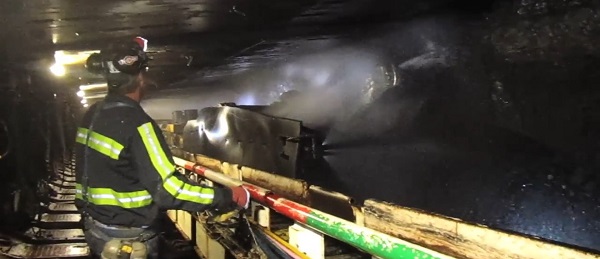
 Daily Caller20 hours ago
Daily Caller20 hours agoTrump Executive Orders ensure ‘Beautiful Clean’ Affordable Coal will continue to bolster US energy grid
-
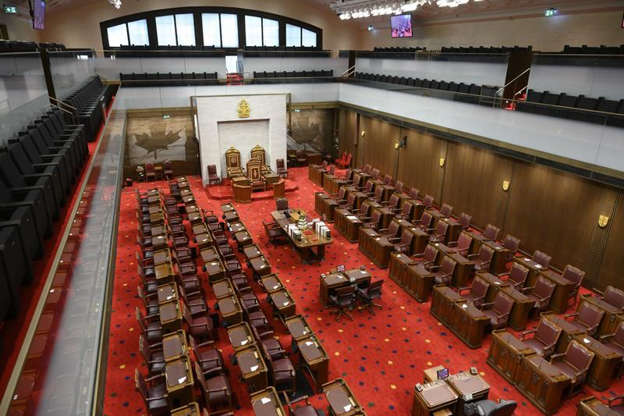
 2025 Federal Election2 days ago
2025 Federal Election2 days agoBureau Exclusive: Chinese Election Interference Network Tied to Senate Breach Investigation
-
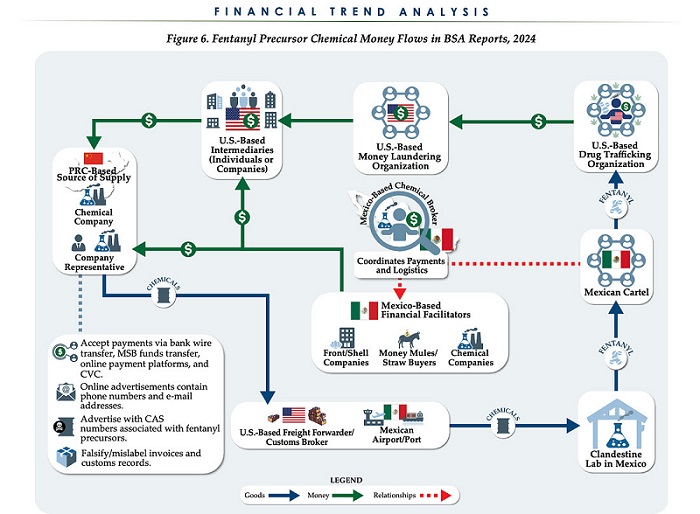
 Business21 hours ago
Business21 hours agoChina, Mexico, Canada Flagged in $1.4 Billion Fentanyl Trade by U.S. Financial Watchdog
-

 2025 Federal Election20 hours ago
2025 Federal Election20 hours agoBREAKING from THE BUREAU: Pro-Beijing Group That Pushed Erin O’Toole’s Exit Warns Chinese Canadians to “Vote Carefully”
-

 2025 Federal Election1 day ago
2025 Federal Election1 day agoTucker Carlson Interviews Maxime Bernier: Trump’s Tariffs, Mass Immigration, and the Oncoming Canadian Revolution
-

 2025 Federal Election18 hours ago
2025 Federal Election18 hours agoAllegations of ethical misconduct by the Prime Minister and Government of Canada during the current federal election campaign
-
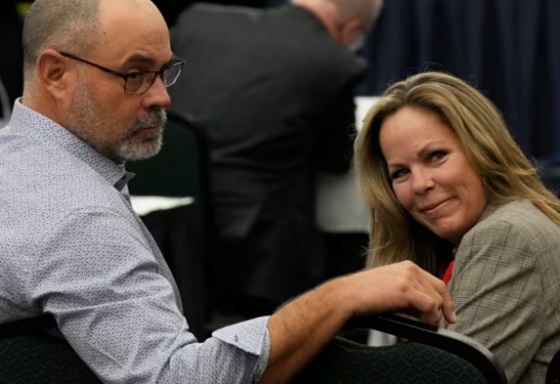
 COVID-1915 hours ago
COVID-1915 hours agoTamara Lich and Chris Barber trial update: The Longest Mischief Trial of All Time continues..



